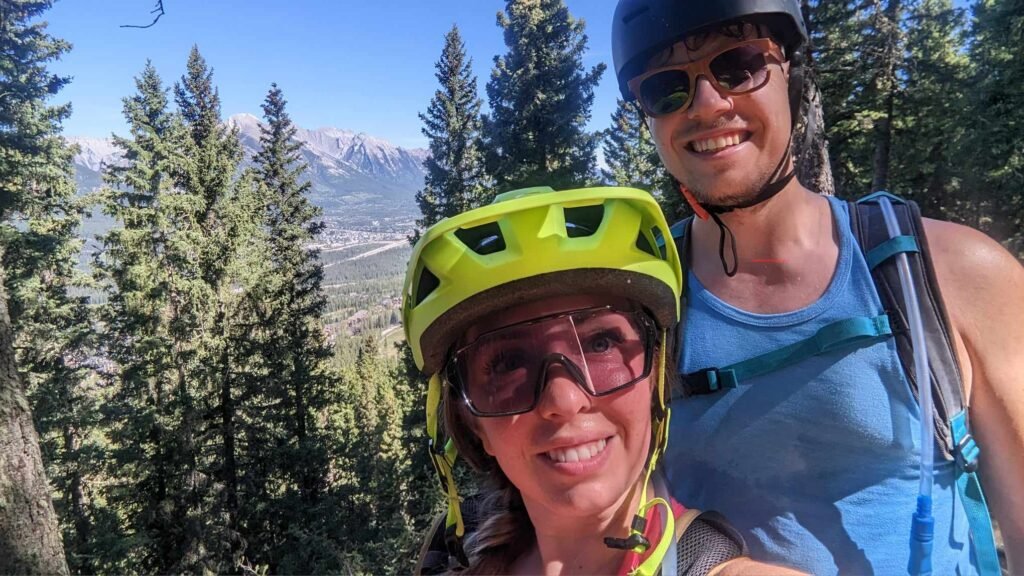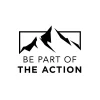Learning How to Mountain Bike
As a woman in my 30s the last thing I expected was to become an avid mountain biker. Three years in, and I absolutely love the sport. I’m going to share with you the biggest mistakes I made, and that I see other new mountain bikers making, that are going to hold you back as well as how to avoid them.

1. Skipping the Fundamentals & Listening to the Wrong Advice
What is the attack position and when do you use it? Where should your feet be on the pedals? What is the proper way to angle yourself and your bike in a corner? Should your elbows be straight or bent on the bike? When do you use your front brake? When should you never use your front brake? Should you be hinging at the waist or bending your knees? How do you avoid washing out and going over the handlebars?
Not to overcomplicate things – but if you’re heading out on a trail, these are a few basic fundamentals you should understand.
I can’t tell you how many times I’ve seen a beginner on the trail reach a downhill section, only to get a quick, two-minute overview from a well-meaning but untrained advisor. Moments later, that same person is over the bars, walking their bike, or going 1km per hour in distress.
Your friends and spouse probably have great intentions and want you to love the sport as much as they do. However, knowing the basics of body position, braking, and cornering will save you a ton of frustration. A lot of the instructions I was given as a new rider were terrible. I had people tell me never to use my front brake unless I’m stopping, to keep my butt entirely over the saddle at all times, and to squeeze the saddle with my legs – the list goes on. This was from people I thought were great riders because they just went faster than me and seemed confident.
I highly recommend taking a beginner lesson to increase your confidence, decrease your chance of injury, and reduce the number of domestic disputes on the trail.
You’ll learn the right techniques and go through drills so it becomes muscle memory, instead of getting a crash course in 2 minutes from someone who doesn’t remember what it’s like to not have these things embedded into their minds and muscles.
2. Not Buying the Right Bike
I got sold on a bike that really didn’t meet my needs, and I impulsively purchased it without realizing it wasn’t suited for the type of riding I wanted to do.
I was sold a heavy, burly enduro bike that was slack, with long travel and meaty tires. A wonderful bike for a strong rider with powerful legs who likes to indulge in some rough downhill.
For the type of riding I wanted to do, my stature, strength, and ability – I didn’t need that bike. It was way too difficult to pedal, heavy, and the tires were so grippy that as a beginner, I struggled with uphill tech.
It might be easy to say, “just get stronger” – but I ride over 100 days each year, in the Rocky Mountains, climbing thousands of feet of elevation. I was a fitness competitor all through my 20s, I have a top 1% VO2 max, I do long-distance mountain races, and I can leg press five times my weight. I’m far from out of shape. But I couldn’t ride that bike up anything without hitting VO2 max instantly. It did improve – but it was never fun.
So, I bought a cross-country bike. Suddenly, I was doing thousands of feet of elevation and 30+ KM with an average heart rate of 100.
That said, my cousin also bought a cross-country bike – but he wanted to go downhilling. He came out with us and went over the handlebars over five times in one ride.
Sure, it was rider error as he was new and didn’t have basic body position down, but a week before, he rented an enduro bike and had zero crashes on a similar trail.
Today, for doing strictly park, I have a downhill bike with dual crown forks. It’s an awesome bike that makes downhill days longer as it absorbs so much shock and has geometry that allows me to be in the attack position easier.
Choosing the Right Bike for Your Mountain Biking Style
In summary, the right tool for the job is key. If you’re doing more cross-country with a ton of climbing and aren’t a super strong rider, consider a cross-country bike. If you’re doing more downhill, an enduro bike will be fine – but as you progress and get a bit more sendy, you may benefit from a downhill-specific bike (plus you might save on parts since downhill bikes tend to wreck less frequently, IMO). If you want something that can do it all, an enduro or all-mountain bike might be a good choice.
Do your research on the bike you’re purchasing and get outside opinions from online communities. Take everything with a grain of salt. There are a ton of “experts” who either demand everyone rides $10,000 bikes or $100 bikes. Your wallet is your business.
Personally, if I have the budget – I’d rather be overbiked than underbiked.
3. Having Too High Expectations of Yourself and Being Competitive
This one is easier said than done, but if you can’t get a handle on your ego, I promise you’re not going to love mountain biking. Someone is always going to be better than you, and someone is always going to learn faster.
Guess what, though? No one was spectacular at it the first time they did it either.
Also, no one cares if you aren’t that good. They go around you, they wait at junctions, and if they are your friends – they’re just happy to be out with you. So often, we hear, “I don’t want you to have to wait for me.” If we were trying to get a PR or set a record, chances are we wouldn’t bring a newbie with us. We just wanna hang with you, so we don’t mind waiting for you.
On the other side of that – if you’re riding with someone who’s been doing it for years and you’re on day one – it probably doesn’t make sense to try to keep up with them or match what they are doing.
No one wants to see their buddy or family member go OTB (over the bars) and end up in the hospital from being competitive without the skills to back it up.
Slow progress is okay, and no matter how cool you think you look – riding like an animal with zero technique just makes people uncomfortable.
4. Not Wearing Proper Mountain Biking Equipment
“I don’t need that” are the famous last words of every new rider. I’ve seen them go without helmets, knee pads – you know, the basics.
Crashes can happen at any time. Wear the proper equipment. Most of the more serious injuries our friends have suffered are all from a lack of equipment.
You might think you look cool going with less equipment, but take a look around at where you’re riding. If you are wearing less equipment than most people on those trails – you’re probably not wearing enough. Especially if you’re new – I’d tend to err on the side of wearing more protective equipment than most people.
When I’m doing cross-country, I wear biking shorts, biking shoes, long socks, knee pads/shin pads, eye protection, a half-face helmet – and chamois!
When going downhill, I’m wearing the works: full-face helmet, elbow pads, chest protector, knee pads, long sleeve jersey, tall socks, goggles, etc.
For a full list of what brands I’m wearing biking, check out my blog What Women Wear Mountain Biking (this isn’t limited to women though lol).
Conclusion
No one is expecting you to be the best. It’s a fun sport, and we want you to have fun and be laughing at your misfortunes. It’s a craft you’ll always be learning and perfecting, so be patient and kind to yourself.
If ya have any questions feel free to type in the comments below or join the community.
